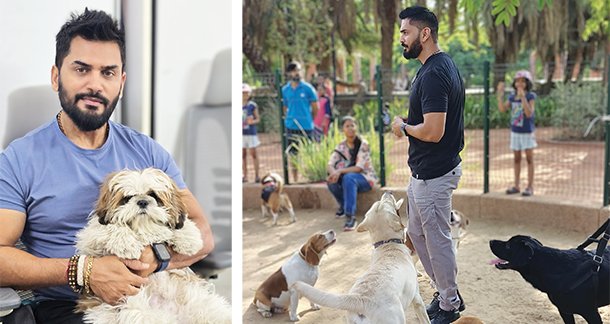If you have ever had a dog, you know how much work it can be. However, as pet parents, it can also be very rewarding. Especially, when your dog is well-trained.
Training your dog is a process that requires time and attention. If you are a new dog parent or looking to sharpen your skills as you train your dog, learn all about dog training in this article.
Start with these daily habits/routines when you begin your dog’s training journey. Stay consistent and positive with this routine.
Create a schedule :- A daily dog training schedule can include training sessions throughout the day, and you can adjust your schedule to be consistent:
- Morning:After your dog goes to the bathroom, you can use their breakfast as a
- Mid-day:Before lunch, you can use their food as
- Afternoon:After their nap, you can take your dog out for his business and then train
- Dinnertime: Before dinner, you can use their food as a
- Beforebed: You can train your dog before bed
Use Positive Reinforcement :- No matter what age or temperament, always use positive reinforcement. Reward good behavior with treats, toys, or praise by letting them know the treat will come after they do what you ask. Don’t wait until the dog is finished with the behavior otherwise, they may obey because they want the treat — not because they followed the command.
Choose a quiet environment :- To help your dog learn, start training in a quiet place with no distractions. Choose a room where your dog feels comfortable. Before starting, make sure there are no new sounds or smells that could distract them. The dog will be focused on you when you use quiet place to train him.
Training before meals :- Yes, you should start dog training before meals because it can help your dog pay closer attention to instructions and earn a reward.
Keep sessions short: Dogs only need 7-10 minutes of training at a time, before they need a break. This will help ensure your dog does not get too tired, frustrated, or lose interest altogether.
Work on basic commands :- First you need to learn to train your dog, then work with your dog on basic commands like “sit” , “come” , “down” and “stay”.
Socializing y our dog :- Socializing your dog is important for developing a confident and well-adjusted adult dog. Walking your dog is a great opportunity for them to learn how to interact with other dogs and build confidence. Introduce your dog to a variety of people, including those of different ages, genders, ethnicities, and abilities.
Leash walking :- Leash walking training must be done at least 3 to 4 times per day. After each meal you must take your dog outside for pee and potty. Leash training your dog can have many benefits for both you and your dog, including: safety, exercise, mental stimulation, stress relief, bonding, communication, discipline.
Never Punish Your dog :- As humans, we have learned that certain things are off limits through the word no but, dogs do not speak our language, so punishing poor behavior can be counter-intuitive. Use positive reinforcement rather than negative. Punishing your dog can train your dog to be aggressive.
Stay consistent :- It is important to be consistent when training your dog. What you do once, you should do every time.
Be patient :- When training your dog, it is important to remember that dogs learn at varying speeds. This means that patience is key. If one method does not work after several tries, move on, give your pet a play break, or try again in your next session. Always end on a positive note by rewarding with a treat, toy, or snuggle.
Have fun :- Dog training is serious business, especially when you have a new dog but, to train your dog effectively you should make it a fun and rewarding process for both of you. Treat every command as a fun, new level for your pup to surpass, rewarding them.

